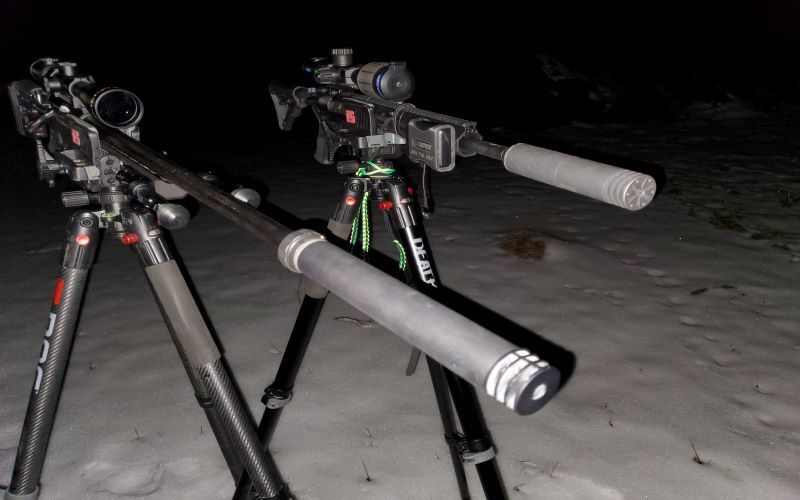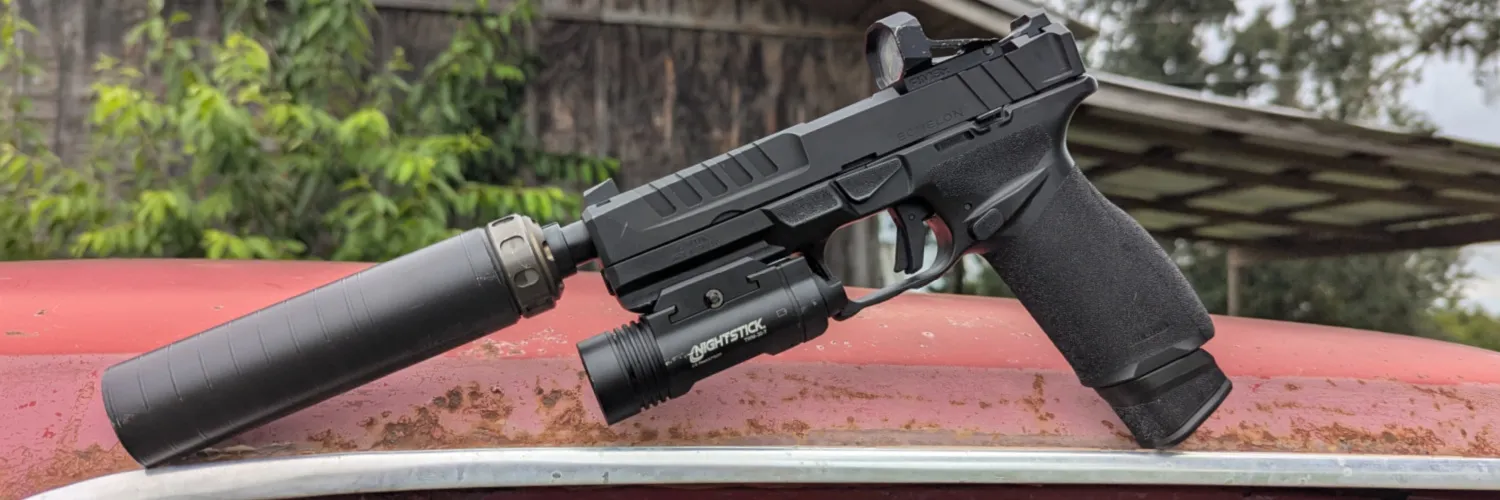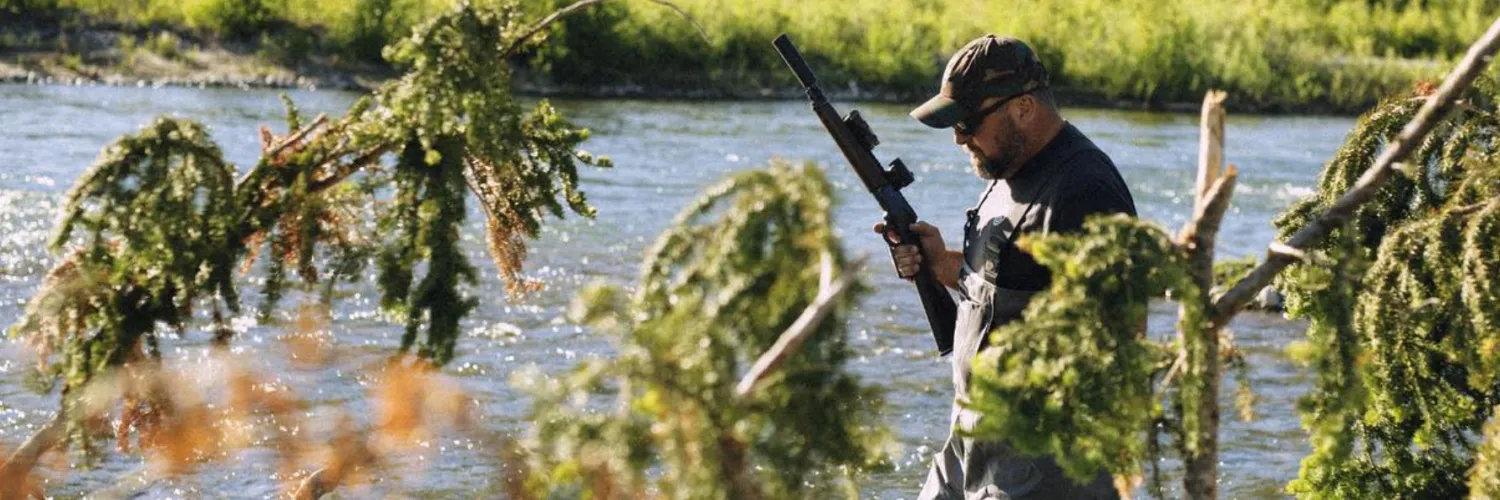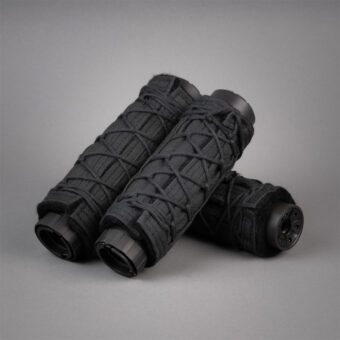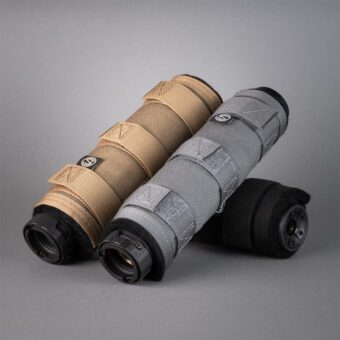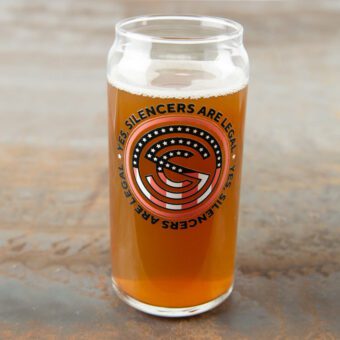Home / All About Silencers / Hunting Tough Eastern Coyotes
Home / All About Silencers / Hunting Tough Eastern Coyotes
Hunting Tough Eastern Coyotes
Larry Case
- March 5, 2021
“Are you on him, Ty?” Connor Boothe is whispering in the darkness and I am leaning forward and straining to hear. Connor and his cousin, Tyler Sams, are murmuring about an approaching coyote in the cold night air. They are stationed on tripod-mounted AR-15 platform rifles with thermal imaging scopes. What sounds like a nasty coyote domestic dispute is being blared out from the predator caller in front of us. Howls, barks and snarls echo into the cold night air and I grin to myself and think it sounds like my dog Callie, when she is not having a good day. I’m watching and shivering on this beautiful Monroe County, West Virginia, night as we are out hunting coyotes — tough eastern coyotes.
Hunting Tough Eastern Coyotes
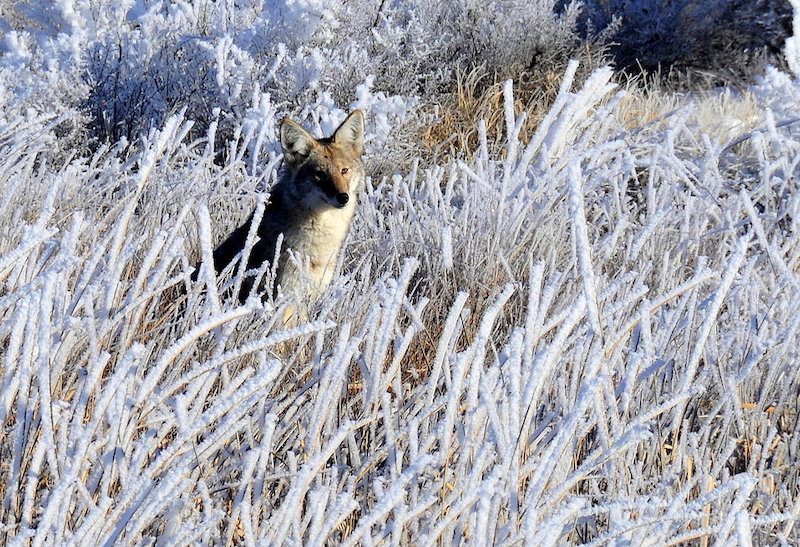
A Dog of a Different Color
The eastern coyote is one tough customer. He has to be to survive, which he has been doing very well east of the Big Muddy, thank you, for more than 50 years. There is much discussion and disagreement as to the origin and ancestry of this canine, and while we won’t go deep into a taxonomy lesson here, most wildlife biologists seem to think the eastern coyote has a varied DNA. Many scientists agree the coyote we now have over much of the east is a coyote-and-wolf mixture with maybe a touch of domestic dog mixed in. In truth, I always have been skeptical of the part-wolf theories, but DNA testing doesn’t lie.
There is no doubt the eastern dog is much bigger and has a more varied fur color scheme than his relatives in the West. You may see coyotes here with the traditional brownish gray pelt with touches of red, or a more varied coat with dark patches, or all the way to an almost coal black fur. The size thing is important as well; coyotes here in the east tend to run bigger, much bigger than their western cousins. Why? Probably their varied ancestry and the availability of more food.
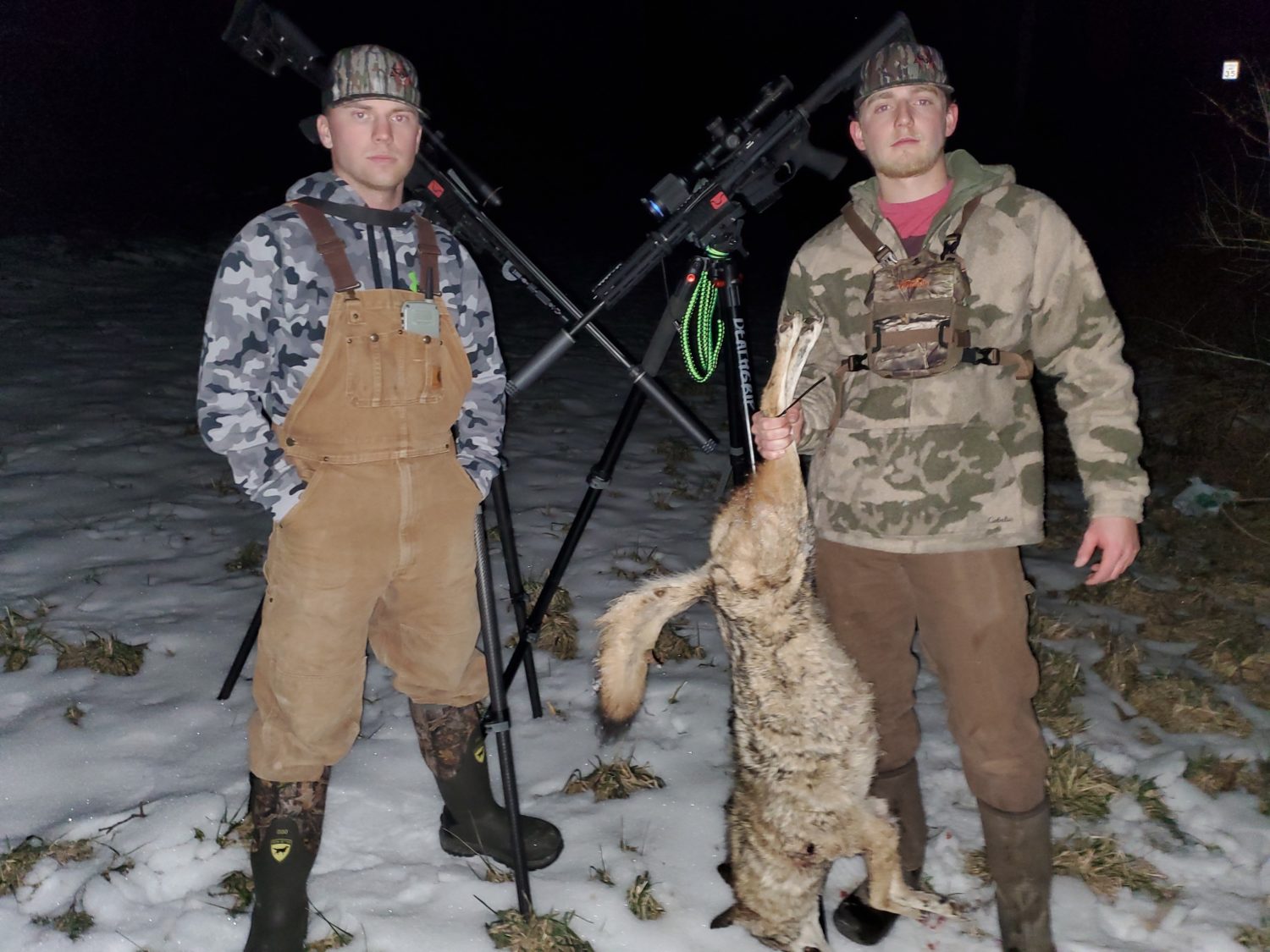
Wherever they came from, and whatever they are related to, the fact is that the eastern coyote is here and probably always will be. Predator hunters – like my friends Connor and Tyler – love to hunt them and they figure whatever coyotes they can take helps out with the deer and turkey population, not to mention aiding farmers with raids on domestic animals such as cattle, sheep, chickens and other livestock. Also, in case you didn’t know, coyotes love to prey on housecats and small dogs, and they are not bashful about coming close to your house to do so.
It could be said the eastern dog is smarter or more wary than those in the west and he is harder to call. Expert coyote hunters may tell you that the eastern version is simply not as plentiful in most areas and has a better food supply than his hungry cousins out west. Regardless of all this, the fact remains the coyote in the east is an intelligent, highly adaptable predator that will do whatever it takes to survive. He has an incredibly developed sense of smell, hearing and eyesight. To score regularly on these canines, you need to have your act together; this goes for your hunting skills and equipment.
Hunters may talk about “getting rid” of the coyote population, but Connor and Tyler do not think that will ever happen. “You won’t ever wipe out the coyotes,” Connor said. “If you eliminate some in a certain area, others will quickly fill in the void, and studies have shown if the population is reduced coyotes will breed more and have larger litters to bring the numbers up.”
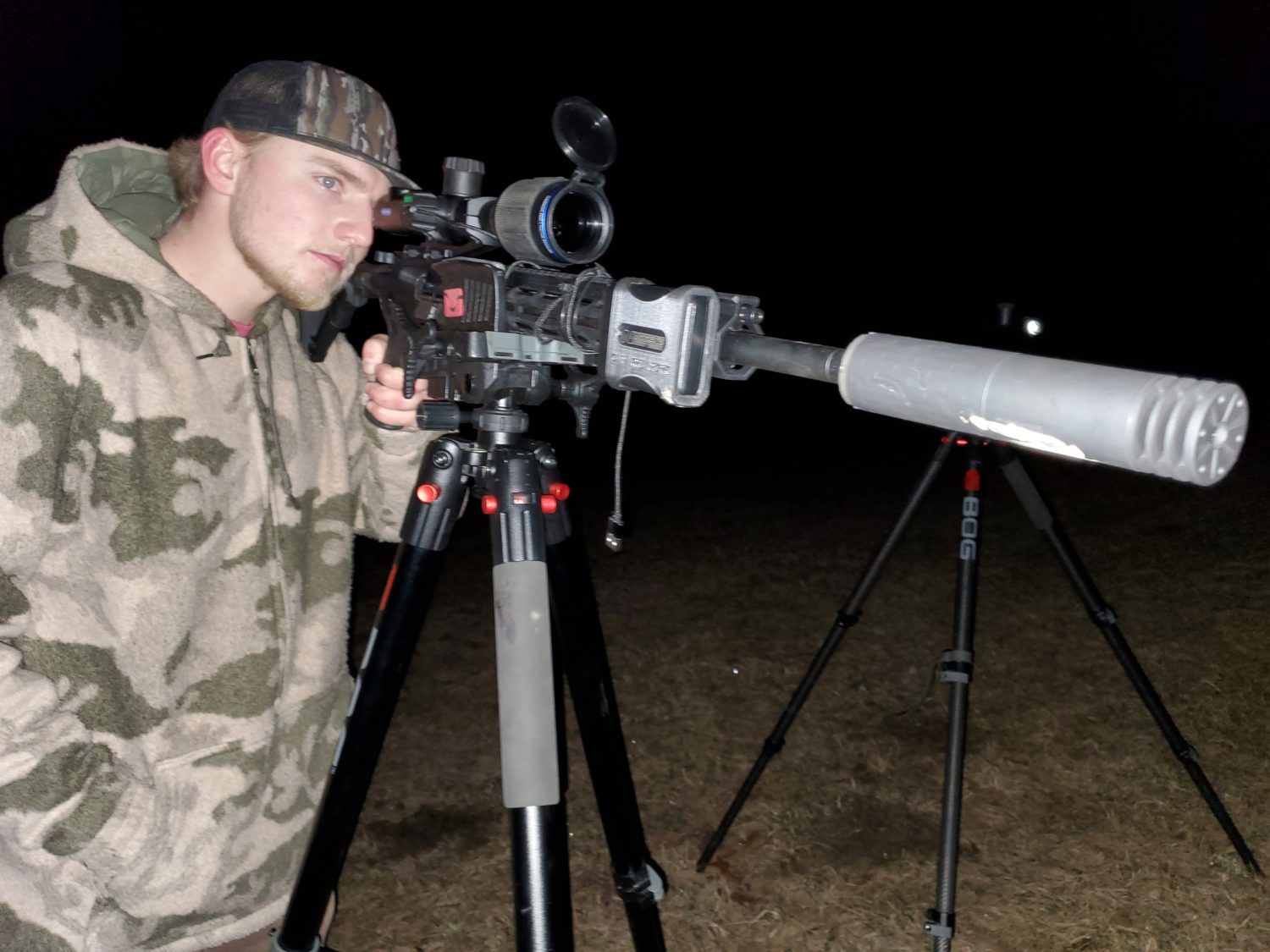
Local Boys Know Their Stuff When It Comes to Hunting Coyotes
Connor caught his first coyote when he was seven-years old. Along with his cousin, Tyler, he has been hunting and trapping them ever since. They both live in Monroe County, in southeastern West Virginia, which has a lot of farms and livestock. This area also boasts deer, turkeys and other wildlife, so Connor and Tyler figure they are helping out with predator control.
“With coyote hunting growing in popularity and the easy access to an electronic caller, it’s hard to find a coyote that has not heard some sort of call in their life,” Connor said. “Coyotes react instinctively, even if you have some ‘educated’ dogs around, there is some type of sound that will trigger something to pull them in. Time of the year plays a factor, whether it’s springtime when the pups are out, or late January and February during breeding season.”
Connor and Tyler will typically hunt around pasture fields where cattle, sheep and other livestock are found. While there is some controversy on coyotes attacking grown cattle, there is no doubt they are likely to be a problem during calving time. Coyotes are bad news with sheep, and more than one farmer has been put out of the sheep business by coyotes.
“We set up and run the call using coyote howls and vocalizations, or prey-in-distress sounds like rabbit squeals, depending on the time of year and what seems to be working lately,” Connor said. “If there is no response after about 30 minutes, we move to the next location.”
The Right Gear for the Job for Hunting Coyotes
“I’m currently running a Savage MSR 15 Recon model in .224 Valkyrie caliber,” Connor said. “Tyler is shooting an Aero Precision rifle in the same caliber, and we have Pulsar Thermion thermal imagining scopes on both. The thermal imaging riflescope allows us to hunt at night when, in my opinion, we can be much more successful. You can call some coyotes in the daytime, but coyotes are nocturnal, and that is when you will see more coyotes.” These hunters use standing tripods that lock on to the rifles, as this allows them to walk into a field, open the tripod and start calling. They also used suppressors on this hunt.
The Advantage of Suppressors When Hunting Coyotes
Connor has told me for some time how much of an advantage a suppressor is for coyote hunting. “First, we often hunt around farms where we could be near the farming family’s house,” he said. “There are usually cattle and other livestock close by, which makes the SilencerCo suppressor a huge advantage. We could show up on a farm in the middle of the night and we don’t want to be disturbing the farmer and his family or the livestock.” Another point here is the suppressor saves the shooters’ hearing as they often set up close together, and if there are multiple shots involved, this can leave ears ringing. Also the suppressor really helps with recoil.
“The suppressor is a big advantage in the actual hunting of the coyote as well,” Connor explained. “I was surprised how much the actual noise of the rifle was reduced with the Omega 300 suppressor from SilencerCo, these rifles are loud! Besides the actual noise reduction, we believe the suppressor also directs the noise of the shot away from the coyote and this really helps.”
He continued, “In a calling session, it is not unusual to call in multiple coyotes, and the noise reduction can be very helpful in getting shots off at more than one coyote. We find if you call a coyote in, we want to take it out. If you call a coyote in and miss it or spook him, he is educated and may be very hard to call in again.”
The suppressor does something else most hunters may not know about. As a comparison, we fired one of the rifles with a suppressor, and one without. The suppressor greatly reduced muzzle flash at night, much more so than the flash hider on the other gun did. Much of what the suppressor does for noise reduction when a rifle is fired goes along with diminishing the flash in low light or darkness. The gases that are released when a round is fired are captured in the baffles, the internal workings of the suppressor. These gases are cooled through turbulence and heat exchange within the suppressor. The lower the temperature of these expended gases, the less glow you will see when the rifle is fired.
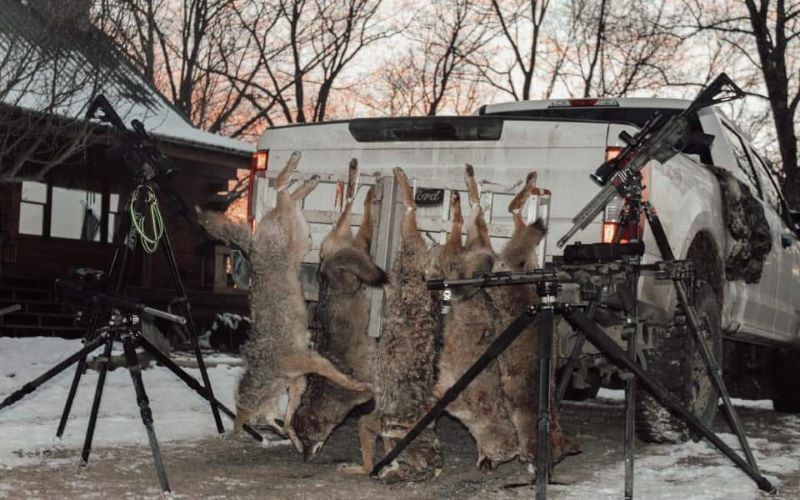
The Hunt
On this night with Tyler and Connor, we shot a suppressed rifle beside an unsuppressed of the same caliber and saw a great difference in the two. As a result, the coyote hunters saw a suppressor as a great advantage for this type of hunting.
The eastern coyote is a survival expert that hunters, game managers and farmers will always have to deal with and somehow manage. The random shooting of a coyote by the occasional deer hunter will not be enough to keep their numbers down to make it a little easier for the deer, turkeys and livestock. Having the right gear, like a SilencerCo suppressor, in your arsenal can give the fawn deer in your area a chance to grow up.


